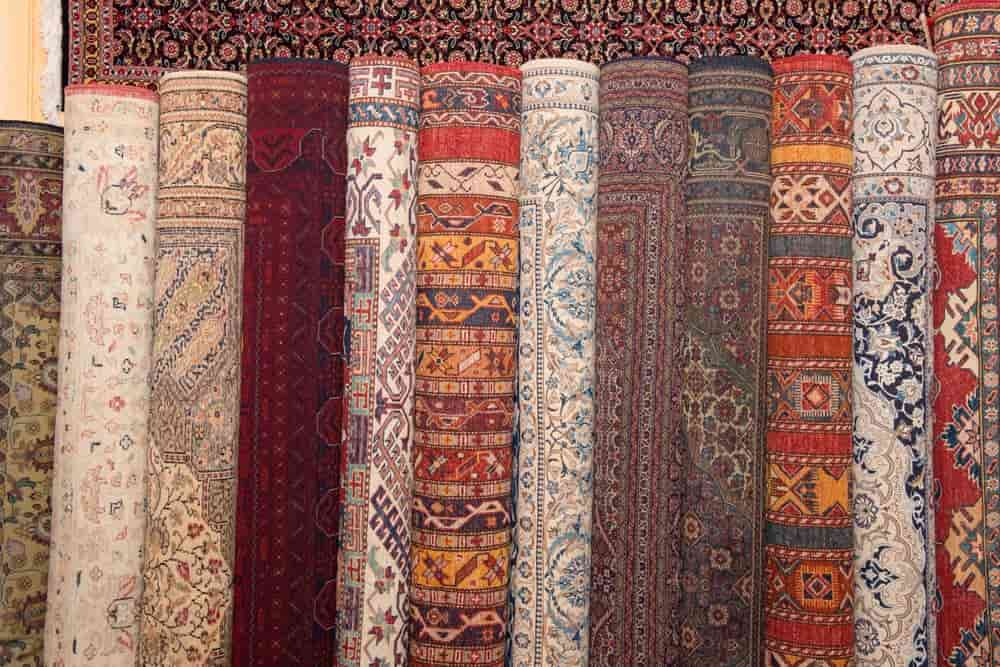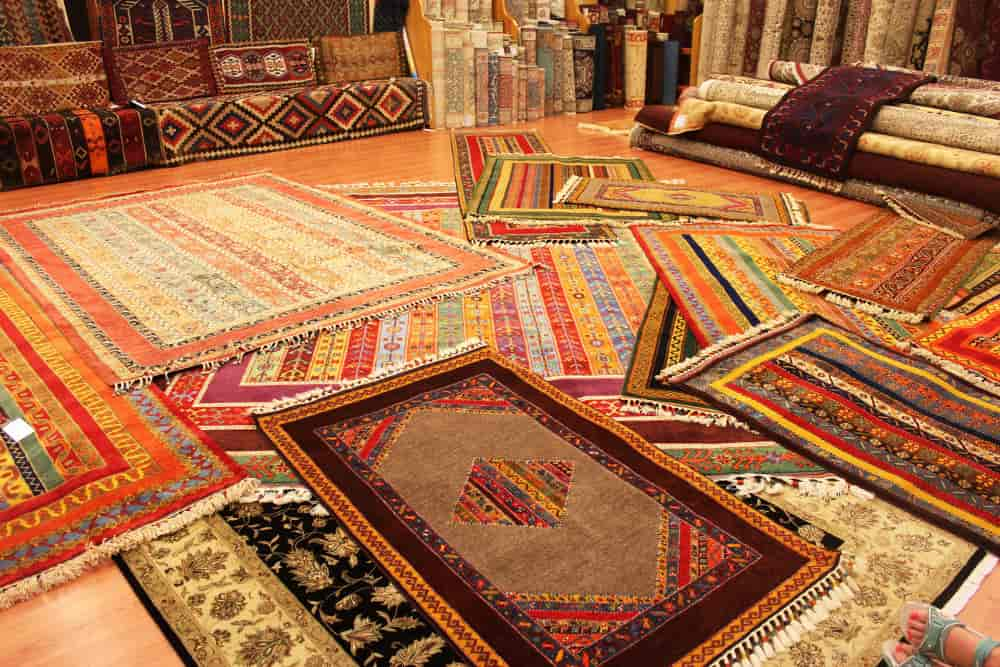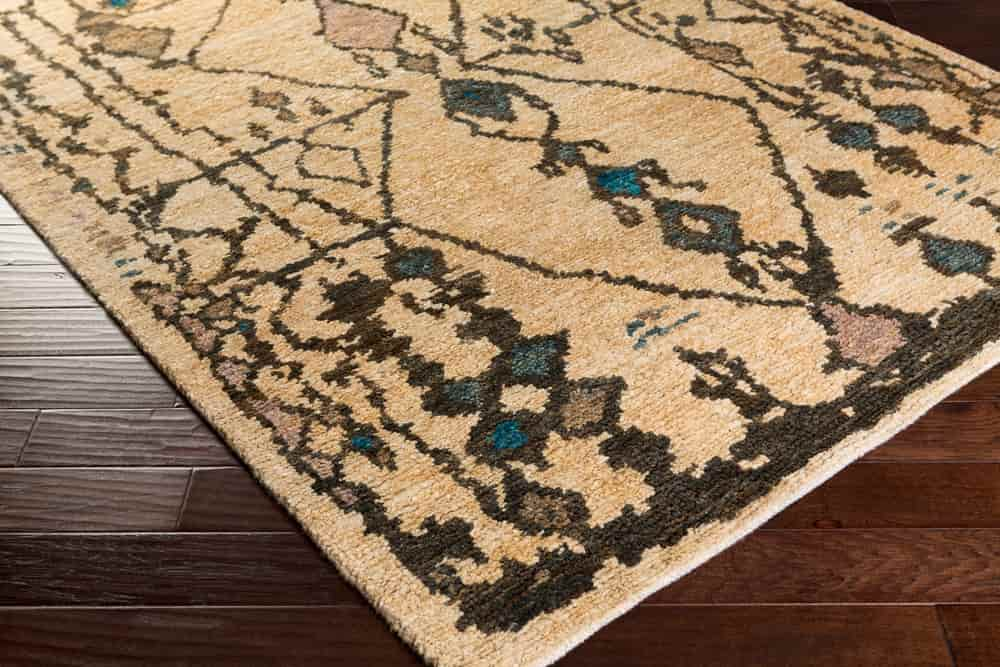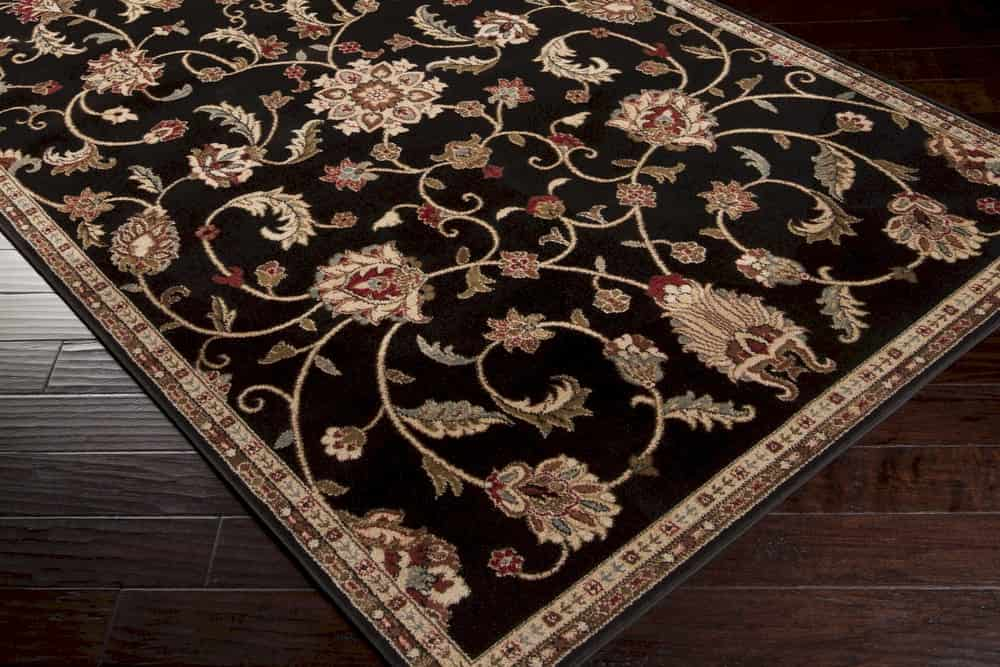Persian Silk carpets are among the most prominent machine-made rugs produced in Iran. A machine-made silk carpet in a variety of hues and patterns adds personality, color, allure, fantasy, and coziness to a home's decor and is appropriate for Iranian-style interior design. The finest machine silk carpets are made at Kashan plants, which use the most advanced and well-equipped machinery to oversee all stages of production, from spinning to weaving. Despite their advantages and faults, these carpets are displayed in stores and draw attention.
- Machine produced silk carpet
It is woven from 100 percent polyester fibers or synthetic silk, also known as viscose, and is also known as Belgian carpet. Silk machine carpets have a shorter lifespan than acrylic machine carpets due to the use of weaker and less resistant fibers in silk carpets. As a result, acrylic machine carpets have a longer lifespan and greater quality than silk machine carpets. In the following section, we will discuss the downsides, benefits, and characteristics of machine silk carpets so that you may make an informed decision about how to decorate your home. 
- Selection of machine silk carpet
Choose machine-made silk carpets by considering the aforementioned factors. If you care more about home décor, uniqueness, stylishness, look, and luxury when purchasing carpets, choose them; if you want a high-quality, strong, and long-lasting carpet that will last for many years, avoid machine silk carpets and choose thicker carpets. If the softness, shine, color, and softness of these carpets entice you to purchase them, you should endeavor to preserve and care for them so that they require minimal washing. These carpets should not be placed in high-traffic parts of the home; instead, they should be placed in regions with less foot activity. Choose a machine silk carpet for its color, design, and effect, and enjoy viewing it, but don't walk on it too much; leave the majority of your attention to your eyes and stare!! However, carpets are one of the most significant parts to complete the arrangement and enhance the attractiveness of the dwellings, and selecting them carefully and wisely enhances their beauty. Choose lighter rugs for tiny rooms to make them appear larger. Don't forget to choose a professional manufacturer, since this will have a significant impact on the quality, durability, and attractiveness of your machine carpet. 
Machine made silk rugs
Similar to other carpets and rugs, silk machine-made carpet has both advantages and downsides. The advantages and disadvantages of this carpet are as follows: Advantages of machine silk carpeting We shall discuss the several benefits of silk carpets manufactured by machine: This carpet has a broad variety of colors and patterns, and its blue-green, red, turquoise, pink, etc. colors will win your heart. Will possess; Additionally, the hues of these carpets are light-resistant. Popular due to their reduced price compared to hand-woven and machine-made acrylic carpets. This carpet's texture is bright, colorful, eye-catching, soft, and shiny due to the type of yarn used to create it. The intricacies of texture give these rugs the appearance of hand-woven carpets, which attracts many individuals. Due to the type of yarn and the consistency of the texture, this carpet does not produce lint or fibers and is an excellent choice for individuals with allergies or skin conditions. These carpets are non-slip on stone, ceramic, and other non-porous surfaces and do not move frequently, reducing the need to regularly break them in. You can match their hue with the color of curtains, furniture, wallpaper, etc. to create a wonderful interior décor using machine-made fake silk carpets.  Negative aspects of machine silk carpet As with any other carpet, machine-made silk carpet has both advantages and downsides. Although the transparency, fine texture, elegance, and beautiful hues of machine-made carpets make them a superb option for home decoration, these carpets are primarily decorative and are susceptible to wear and tear over time: Due to its high level of delicacy, the machine silk carpet has a limited thickness and is very soft; as a result, it is not resistant to washing, and after each wash its colors become less brilliant. Families with children who must frequently clean their carpets should select a carpet with greater durability. If these carpets need to be cleaned, they should be cleansed with finesse and by a trustworthy carpet cleaner. These carpets lose their quality due to their inability to withstand the weight of big things such as tables, sofas, etc. Against the ambient temperature, cold or excessive heat, they lose their form and qualities; in general, these rugs are delicate and susceptible. These carpets may absorb dirt and become discolored more quickly. Because their thread quality is lower than that of acrylic carpets, machine-made silk rugs are typical of inferior quality and consequently less expensive.
Negative aspects of machine silk carpet As with any other carpet, machine-made silk carpet has both advantages and downsides. Although the transparency, fine texture, elegance, and beautiful hues of machine-made carpets make them a superb option for home decoration, these carpets are primarily decorative and are susceptible to wear and tear over time: Due to its high level of delicacy, the machine silk carpet has a limited thickness and is very soft; as a result, it is not resistant to washing, and after each wash its colors become less brilliant. Families with children who must frequently clean their carpets should select a carpet with greater durability. If these carpets need to be cleaned, they should be cleansed with finesse and by a trustworthy carpet cleaner. These carpets lose their quality due to their inability to withstand the weight of big things such as tables, sofas, etc. Against the ambient temperature, cold or excessive heat, they lose their form and qualities; in general, these rugs are delicate and susceptible. These carpets may absorb dirt and become discolored more quickly. Because their thread quality is lower than that of acrylic carpets, machine-made silk rugs are typical of inferior quality and consequently less expensive. 
Silk rugs
Silk carpets are rugs that are woven with silk fibers. Silk carpets are often quite rich and opulent, and they are frequently found in premium home settings. They have existed since antiquity and were initially manufactured in China. Their origins can be linked to that nation. Even though they are now produced in a number of countries, the majority are still manufactured in China, where they were first invented. Silk carpets are available in both natural and synthetic varieties. The silk used to make natural carpets is derived from natural silkworms, whereas the silk used to make synthetic rugs is manufactured through chemical processes. Artificial silk rugs are significantly less expensive than silk rugs, however they do not last nearly as long. Natural silk carpets are more resilient and retain their color for longer durations. Depending on the maker, silk carpets can be created in a variety of different methods. A spinning wheel is used to create yarn from unprocessed silk fibers in one technique. Alternately, the yarn can be woven into a fabric using a knitting machine to create a smooth surface. The third method involves coloring the yarn before using it to weave the rug. Depending on the technique employed, the final product may have any of the following appearances and sensations: The quality of a silk carpet may vary considerably between manufacturers. While some companies attempt to keep their pricing as low as possible, others produce only products of the best quality. Silk rugs with a higher price tag tend to be softer and costlier than those with a lower price tag. However, although lower products may be less expensive, they may not be of the expected quality. Silk rugs are offered in numerous unique patterns. Some of the designs are intended to resemble traditional oriental rugs, while others have a more contemporary and stylish appearance. Many consider silk rugs to be superior to wool rugs because of their softer texture and a greater level of comfort. Additionally, silk carpets are less difficult to clean than wool carpets. In the early 1900s, silk carpets were introduced to Europe for the first time. Since then, demand for silk carpets has surged, resulting in a substantial increase in their popularity. Silk carpets are becoming increasingly widespread in homes throughout the world. 
Persian silk rugs
Silk rugs produced in Iran, especially Persian hand-woven ones, are frequently recognized as among the finest and most elaborate examples of their sort in the world. Following is a brief introduction to Iranian silk carpets, followed by a summary of its features.
- Iranian silk carpet
The Iranian carpet-making tradition extends back to the country's oldest civilizations (Iran). The word "carpet" comes from the Persian word "regaldoleh," which literally means "the place where carpets are woven." The practice of carpet weaving was brought to Iran by nomadic tribes that had formerly occupied Central Asia. These individuals arrived in Iran and settled in numerous places under the name Turkmen. In order to create a carpet, the wool must first be prepared. After the wool has been spun into yarn, it is colored using natural pigments. After the thread has been dyed, it is twisted together to make a thread. The knitter creates stitches down the length of the thread at regular intervals. The weaver then creates the underlay by weaving the separate threads together. The weaver next takes a needle and weaves the foundation together. He continues weaving the pattern on the pi till he reaches the end of the rug, at which time he stops. The weaver adds the final touches to the rug, including fringes and tassels.
- Details or Specifics
At its widest point, the width of an Iranian carpet should measure between one and two meters. The proportions of the carpet will be determined by the size of the intended room. If the carpet is to be installed in a smaller-than-average room, the space it occupies should be proportionally smaller than if it were to be installed in a larger-than-average room. Typically, the weight of carpet is given in pounds per square foot. The amount of knots packed into one square inch is also known as candle height. There should be between 200 and 300 knots per square inch for a carpet to be regarded as of high quality. The maximum height of the carpet's pile should not exceed 0.25 inches. The word "pile height" refers to the distance that the carpet's fibers protrude beyond the rug's surface. The bigger the pile height, the more valuable the rug appears. 
- countries with primary production
Iran is currently home to an abundance of carpet manufacturers. Iran is home to the overwhelming majority. However, Turkey, India, Pakistan, Afghanistan, and China are home to some of the world's finest weavers of Iranian-inspired carpets.
